
Fundamentals
To truly understand the essence of Mineral Rich Hair, we begin not with a clinical definition, but with an echo from the source—a whisper from the very earth that grounds our existence and nourishes the strands that crown us. Mineral Rich Hair speaks to a profound connection between the elemental composition of our world and the vitality expressed in our hair. It is a concept deeply intertwined with the wellspring of life itself, extending from the soil beneath our feet to the waters that sustain us, and indeed, to the very nutrients that scaffold our being. This initial delineation considers hair that manifests exceptional strength, resilience, and a distinctive luster, qualities often traceable to an optimal infusion or absorption of vital minerals.
Consider hair not merely as inert fiber, but as a living archive, capable of reflecting the environment and sustenance that shaped it across generations. The elemental explanation of Mineral Rich Hair acknowledges that hair fibers themselves, primarily composed of keratin protein, require a symphony of micronutrients to maintain their structural integrity and optimal function. These include, but are not limited to, calcium, magnesium, zinc, iron, selenium, and copper. When present in harmonious balance, these elements contribute to the hair’s elasticity, its innate ability to resist breakage, and its luminous appearance.
A straightforward statement about Mineral Rich Hair implies an internal fortitude, a deep-seated vibrancy that originates from foundational biological and environmental factors. It suggests a strand not merely existing, but thriving, nourished by the very building blocks of the planet.
The initial grasp of Mineral Rich Hair invites us to look beyond superficial appearances, recognizing the unseen foundational elements that dictate hair health.

The Earth’s Quiet Contributions to Hair
The most rudimentary interpretation of Mineral Rich Hair stems from a direct interaction with the natural world. Our ancestors, living intimately with the land, understood intuitively that the health of the body, including the hair, mirrored the health of the earth. Soil composition, water sources, and local botanicals, all imbued with varying mineral profiles, were unconsciously, yet potently, contributing to the hair’s elemental composition.
For communities living in regions blessed with mineral-laden springs or fertile, unadulterated soil, the hair, through diet and topical applications, would naturally receive a richer spectrum of these fortifying elements. The term here describes a state of being, a natural endowment stemming from an environmentally synchronized existence.
From a fundamental perspective, Mineral Rich Hair refers to hair that is intrinsically robust, displaying resilience that hints at deep cellular nourishment.
- Calcium ❉ A fundamental building block, it contributes to overall hair strength and the integrity of the hair follicle.
- Magnesium ❉ Involved in protein synthesis and helps prevent calcium buildup, which could lead to hair brittleness.
- Zinc ❉ Supports healthy hair growth and repair, aiding in the function of oil glands around the follicles.
- Iron ❉ Crucial for oxygen transport to hair follicles, a deficiency often manifesting as hair thinning or loss.
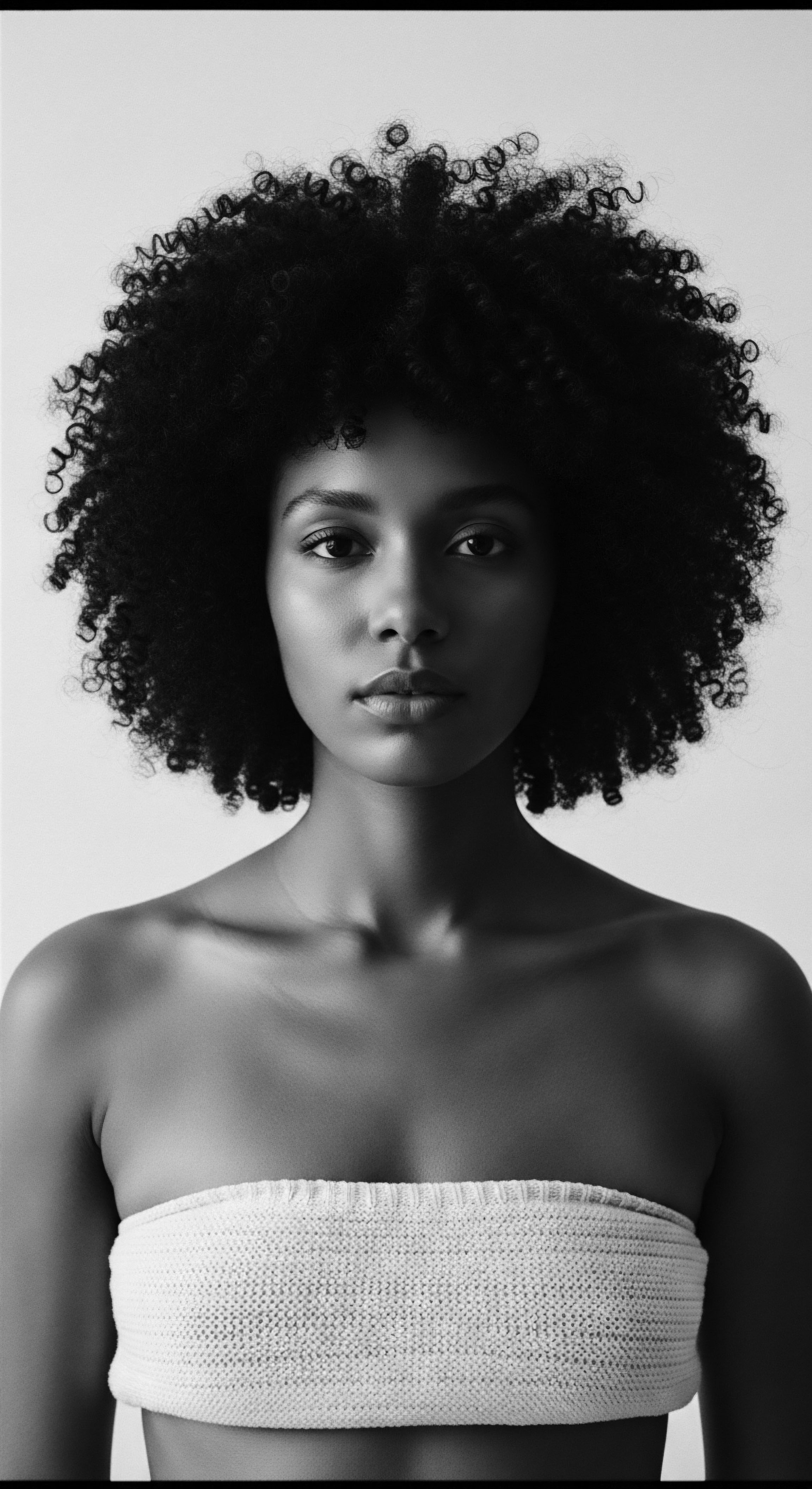
Initial Pathways to Hair Nourishment
The initial pathways to achieving or maintaining Mineral Rich Hair often mirrored the simplest human practices of self-care and sustenance. Ancestral communities did not possess laboratories or complex chemical analyses; their wisdom was observational and experiential. They noticed, through generations of lived experience, which clays, which plant decoctions, which natural waters yielded hair that felt stronger, that resisted shedding, or displayed a desirable sheen.
These elemental applications, often derived from mineral-bearing geological formations or botanicals that accumulate specific elements from the soil, began the continuous dialogue between human care and the earth’s bounty. This foundational understanding lays the groundwork for appreciating the more complex definitions, which delve into cultural practices and scientific validation, but its origin remains humble, rooted in the earth’s quiet offerings.
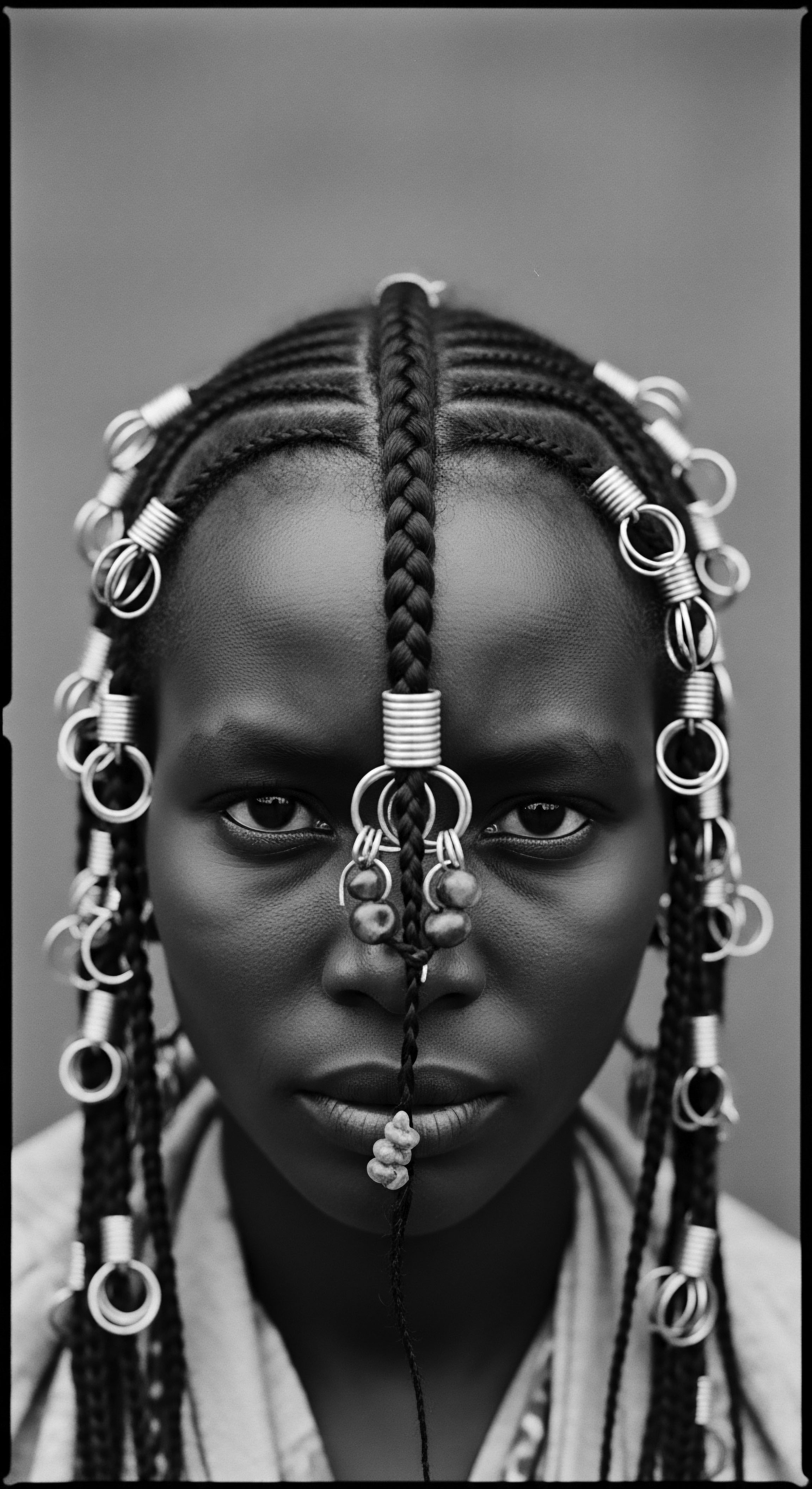
Intermediate
Elevating our understanding, the intermediate description of Mineral Rich Hair begins to bridge the perceived gap between elemental biology and human agency within the domain of textured hair care. It extends beyond the mere presence of minerals, signifying hair that has not only absorbed these vital elements but actively benefits from their presence, translating into tangible improvements in texture, strength, and overall vitality. This interpretation acknowledges the profound impact of minerals on the hair’s internal architecture and its external resilience, especially when considering the unique structural characteristics of coily, kinky, and wavy hair patterns. Here, Mineral Rich Hair becomes a testament to conscientious care, blending ancestral wisdom with an evolving knowledge of hair biology.
This deeper clarification of Mineral Rich Hair illuminates its role not just in intrinsic health but in optimizing the unique characteristics of textured hair. The meaning here incorporates how a balanced mineral profile contributes to the hair’s ability to retain moisture, to resist breakage under tension, and to exhibit the desired curl definition—qualities often challenging for hair with more intricate helical structures. The connotation broadens, recognizing that for Black and mixed-race hair experiences, where resilience against environmental stressors and styling practices has always been paramount, mineral sufficiency acts as a critical bulwark. It’s a conceptualization that considers how generations have intuitively sought out and applied mineral-laden remedies, cultivating practices that inadvertently contributed to this very state of hair vitality.
Mineral Rich Hair represents a dynamic interplay between the hair’s inherent structure and the fortifying elements absorbed through deliberate care and environmental interaction.

Hair as a Biological Archive ❉ A Deeper Look
From an intermediate scientific vantage point, hair functions as a biomarker, its composition reflecting systemic nutritional status and environmental exposures over time. When we refer to Mineral Rich Hair, we are contemplating a fiber that has optimally assimilated and integrated minerals into its protein matrix. For example, sulfur, an essential mineral component of keratin, forms disulfide bonds crucial for hair’s strength and shape. Other elements, like silicon, contribute to the hair’s luminosity and elasticity.
The delineation here focuses on the bio-availability and effective utilization of these minerals within the hair follicle and the growing strand, which distinguishes truly robust hair from merely hair exposed to minerals. The interpretation is that of a system working in equilibrium, where mineral intake and absorption directly influence the hair’s architectural integrity, granting it a capacity for enduring wear and diverse styling.
Consider the historical perspective ❉ ancestors meticulously crafted hair care solutions from what was available in their immediate surroundings. These practices, honed over centuries, often involved ingredients like clays, specific plant infusions, or even prepared waters from mineral springs. These components, without the benefit of modern chemical analysis, were intuitively chosen for their efficacy.
This highlights a subtle but profound connection ❉ the ancestral pursuit of healthy hair often led directly to the application of mineral-rich materials, a practice now affirmed by our understanding of mineral bioavailability and hair physiology. The historical context explains the persistent presence of such ingredients in traditional hair care repertoires across the diaspora, a testament to their time-honored efficacy.

Ancestral Practices and Elemental Wisdom
The deliberate application of mineral-rich elements forms a vital component of ancestral hair care traditions, particularly within communities where textured hair predominates. These practices were not random; they were a confluence of environmental knowledge, spiritual reverence, and practical innovation. For instance, the use of certain volcanic or sedimentary clays, found in various parts of Africa and the diaspora, for cleansing and conditioning was widespread. These clays naturally possess a high concentration of minerals like silica, iron, magnesium, and calcium.
When mixed with water, they form a paste that not only gently cleanses by absorbing impurities but also imparts these beneficial minerals, strengthening the hair shaft and conditioning the scalp. This historical context provides an essential framework for understanding the heritage of Mineral Rich Hair; it was a state actively sought and cultivated through practices rooted in deep elemental wisdom.
Generational knowledge, passed down through oral traditions and lived experiences, often intuitively harnessed the earth’s mineral bounty to fortify and beautify textured hair.
The intentionality behind these traditional methods is crucial. It was an intuitive science, a heritage of care passed from elder to youth. The preparation of hair treatments from plant materials often involved processes that could concentrate or make minerals more accessible. For example, boiling specific leaves or barks might create a mineral-infused decoction.
Fermentation processes could enhance the bioavailability of certain compounds. The term Mineral Rich Hair, from this intermediate perspective, acknowledges these layered applications, moving beyond a simple definition to consider the methods and motivations behind fostering such hair health. It becomes a reflection of heritage, ingenuity, and a continuing dialogue between humankind and the generative forces of the natural world.
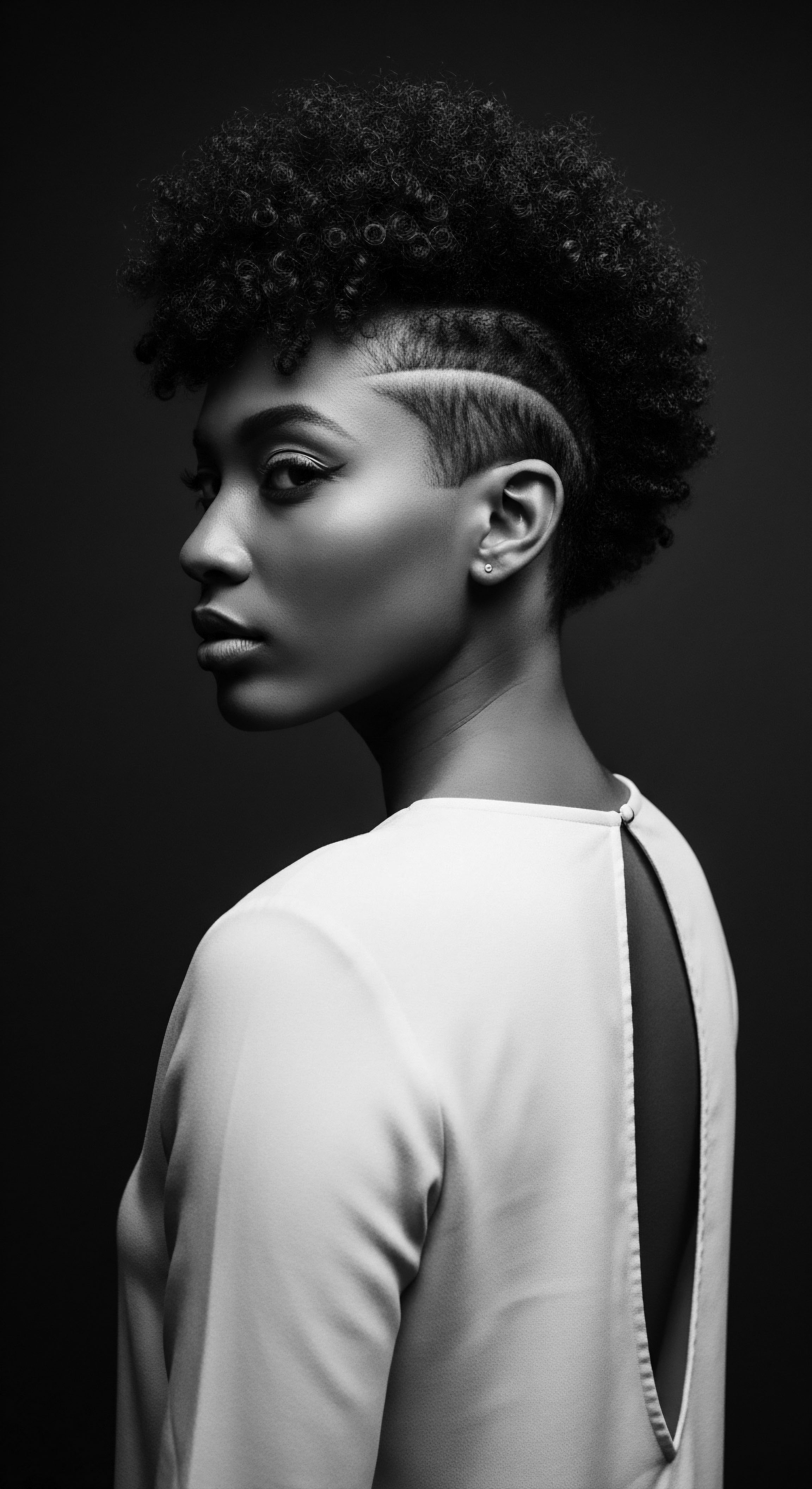
Academic
An academic definition of Mineral Rich Hair transcends a mere observation of vitality, proposing it as a scientifically cognizable state where the hair fiber exhibits an optimal and balanced concentration of specific trace and macro-minerals. This concentration significantly contributes to the hair’s structural integrity, functional resilience, and aesthetic attributes, particularly pertinent to the intricate biomechanics of textured hair. The clarification here is rooted in analytical chemistry, nutritional science, and dermatotrichology, positing that a nuanced interplay of elements like calcium, zinc, iron, copper, magnesium, silicon, and sulfur at precise concentrations within the keratin matrix and follicular environment is directly correlated with superior hair health indices. The meaning, therefore, is not just descriptive but prescriptive, implying that such a mineral profile can be actively cultivated and maintained through systemic nutritional intake and targeted topical applications, often echoing ancestral wisdom.
This elevated delineation interprets Mineral Rich Hair as a complex biological signature, indicative of both inherited predispositions and deliberate care regimens. The implication is profound ❉ hair, a non-invasive biopsy material, can reflect the intricate dance of mineral metabolism within the body, as well as the efficacy of external interventions. For individuals of Black and mixed-race heritage, whose hair typically presents a unique elliptical cross-section and a higher density of disulfide bonds contributing to its distinctive coiling patterns, the maintenance of optimal mineral levels becomes a particularly critical factor in mitigating breakage, promoting elasticity, and sustaining natural moisture. The explication of Mineral Rich Hair within this academic framework necessitates an examination of its molecular underpinnings and its historical cultivation through culturally specific practices that unknowingly, yet effectively, optimized mineral delivery to the hair system.
Mineral Rich Hair signifies a biologically optimized state of hair fiber, where balanced mineral concentrations support enhanced structural integrity, functional resilience, and aesthetic vibrancy, especially crucial for textured hair types.

The Biogeochemical Dialogue of Hair
From an academic standpoint, the concept of Mineral Rich Hair engages with the biogeochemical cycles that govern mineral availability and absorption. Minerals enter the human system primarily through diet and water, becoming bioavailable through complex digestive and metabolic processes before reaching the hair follicle via the bloodstream. Once incorporated into the keratinocytes, these elements play diverse roles ❉ zinc is a cofactor for numerous enzymes involved in protein synthesis and cellular division, essential for healthy hair growth; iron supports the oxygenation of the follicular dermal papilla, critical for nutrient delivery; and silicon has been linked to the formation of cross-links in the keratin structure, contributing to hair strength and sheen (Piel & Thoden van Velzen, 1980). The analytical designation of Mineral Rich Hair thus requires quantitative assessment, moving beyond subjective observation to a measured understanding of elemental concentration within the hair shaft.
Furthermore, the interaction of external environmental factors and topical applications with the hair fiber introduces another layer of mineral influence. Hair, being porous, can absorb elements from its external milieu. This is where historical and ancestral practices gain scientific validation. Consider the venerable tradition of using African Black Soap (Dudu-Osun), a staple in many West African communities and across the diaspora, not only for cleansing the body but profoundly for hair care.
This soap is traditionally crafted from the ashes of plant materials such as cocoa pods, plantain peels, shea tree bark, and palm tree leaves. These plant ashes are notably abundant in potassium, calcium, magnesium, and iron (Anhwange et al. 2011). When applied as a cleanser, the naturally occurring minerals from these ashes are released onto the hair and scalp, interacting with the hair fiber and providing a direct external source of fortification. This deliberate, albeit intuitively derived, application of mineral-laden botanicals stands as a powerful historical example of actively fostering what we now define as Mineral Rich Hair.
The long-term consequences of consistent mineral sufficiency for textured hair include reduced susceptibility to breakage, improved elasticity, and enhanced moisture retention. This translates into a hair type that is not only healthier at a microscopic level but also more manageable and resistant to common challenges associated with environmental stressors and styling manipulations prevalent in Black and mixed-race hair experiences. The substance of Mineral Rich Hair, therefore, is not merely about aesthetic appeal; it signifies a state of resilience that has allowed textured hair to endure, adapt, and flourish through centuries of diverse contexts and often challenging circumstances.
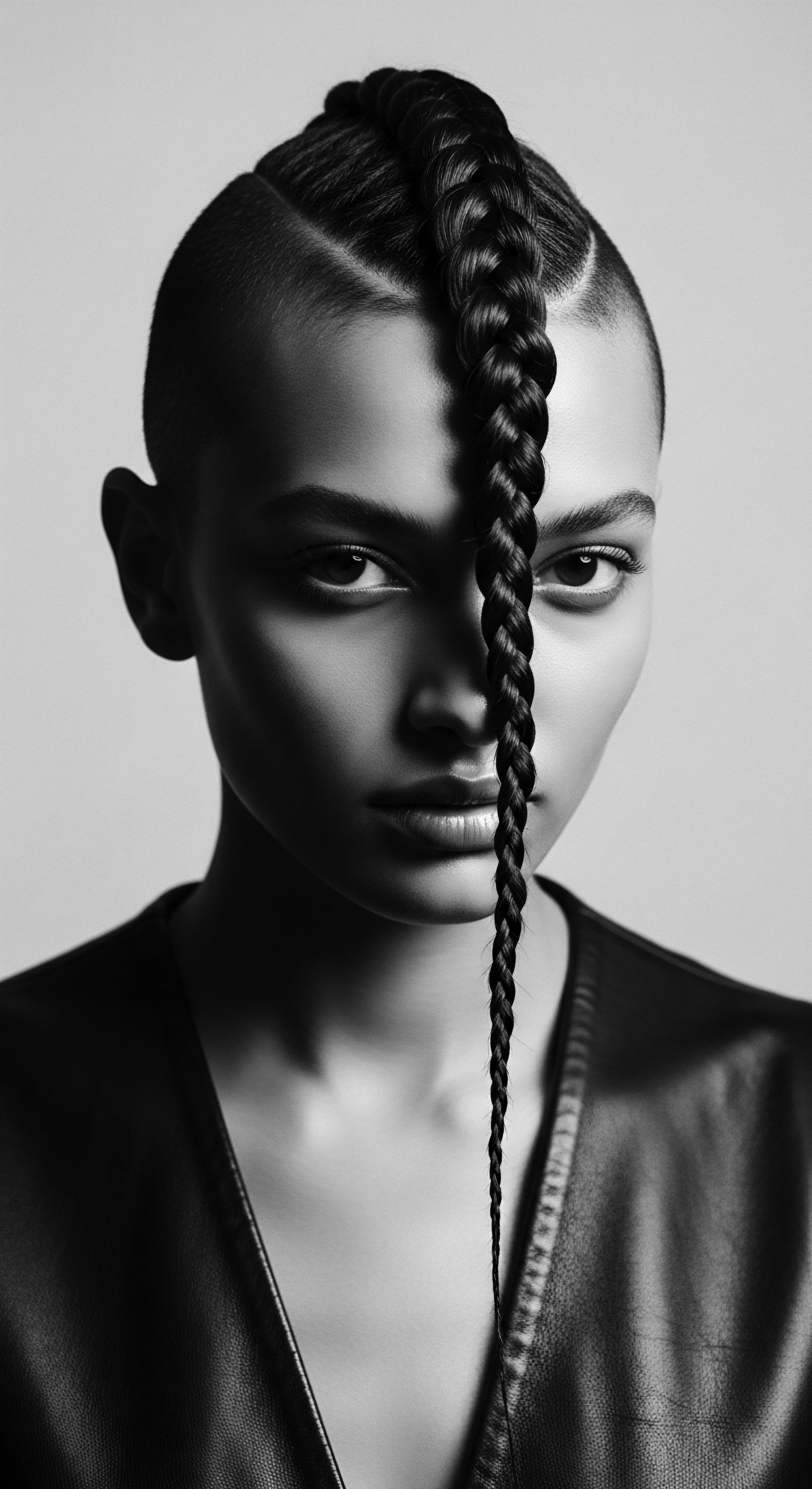
Cultural Applications and Their Elemental Foundations
Across various ancestral communities, the pursuit of vibrant hair led to the development of sophisticated techniques that, viewed through a modern scientific lens, demonstrate an astute awareness of mineral efficacy.
| Traditional Practice/Ingredient African Black Soap (from plant ashes) |
| Primary Mineral(s) Contributed (Historical/Inferred) Potassium, Calcium, Magnesium, Iron, Zinc |
| Relevance to Textured Hair Heritage Cleansing, softening, and providing a natural source of fortification; widely used in West African and diasporic hair traditions. |
| Traditional Practice/Ingredient Clay Masks (e.g. Rhassoul, Kaolin) |
| Primary Mineral(s) Contributed (Historical/Inferred) Silica, Magnesium, Calcium, Iron, Potassium |
| Relevance to Textured Hair Heritage Detoxifying scalp, conditioning, promoting softness and curl definition, especially valued in North African and Middle Eastern hair practices. |
| Traditional Practice/Ingredient Amla (Indian Gooseberry) & Shikakai (Acacia Concinna) |
| Primary Mineral(s) Contributed (Historical/Inferred) Iron, Calcium, Phosphorus, Vitamin C (aids mineral absorption) |
| Relevance to Textured Hair Heritage Strengthening hair roots, preventing breakage, adding sheen; integral to Ayurvedic hair care traditions in the Indian diaspora. |
| Traditional Practice/Ingredient Seaweed/Algae Washes (coastal communities) |
| Primary Mineral(s) Contributed (Historical/Inferred) Iodine, Magnesium, Calcium, Zinc |
| Relevance to Textured Hair Heritage Remineralizing scalp and hair, promoting growth, and improving texture; utilized in coastal indigenous practices for hair health. |
| Traditional Practice/Ingredient These practices underscore the enduring ancestral wisdom of leveraging natural elements to foster hair health and resilience across diverse cultural landscapes. |
The interconnected incidents across disciplines further illuminate the meaning of Mineral Rich Hair. From anthropology, we derive narratives of cultural significance where hair was a marker of status, identity, and spirituality, often requiring meticulous care regimes. From environmental science, we glean insights into regional mineral deposits and their influence on local flora used in hair preparations. From biochemistry, we ascertain the precise mechanisms by which these minerals interact with hair proteins and follicular cells.
This multi-dimensional exploration reveals that Mineral Rich Hair is not a static condition but a dynamic expression of environmental synergy, ancestral ingenuity, and biological optimization. The pursuit of such a state continues, bridging ancient methodologies with contemporary understanding, fostering a hair legacy that honors both scientific insight and the profound heritage of care.
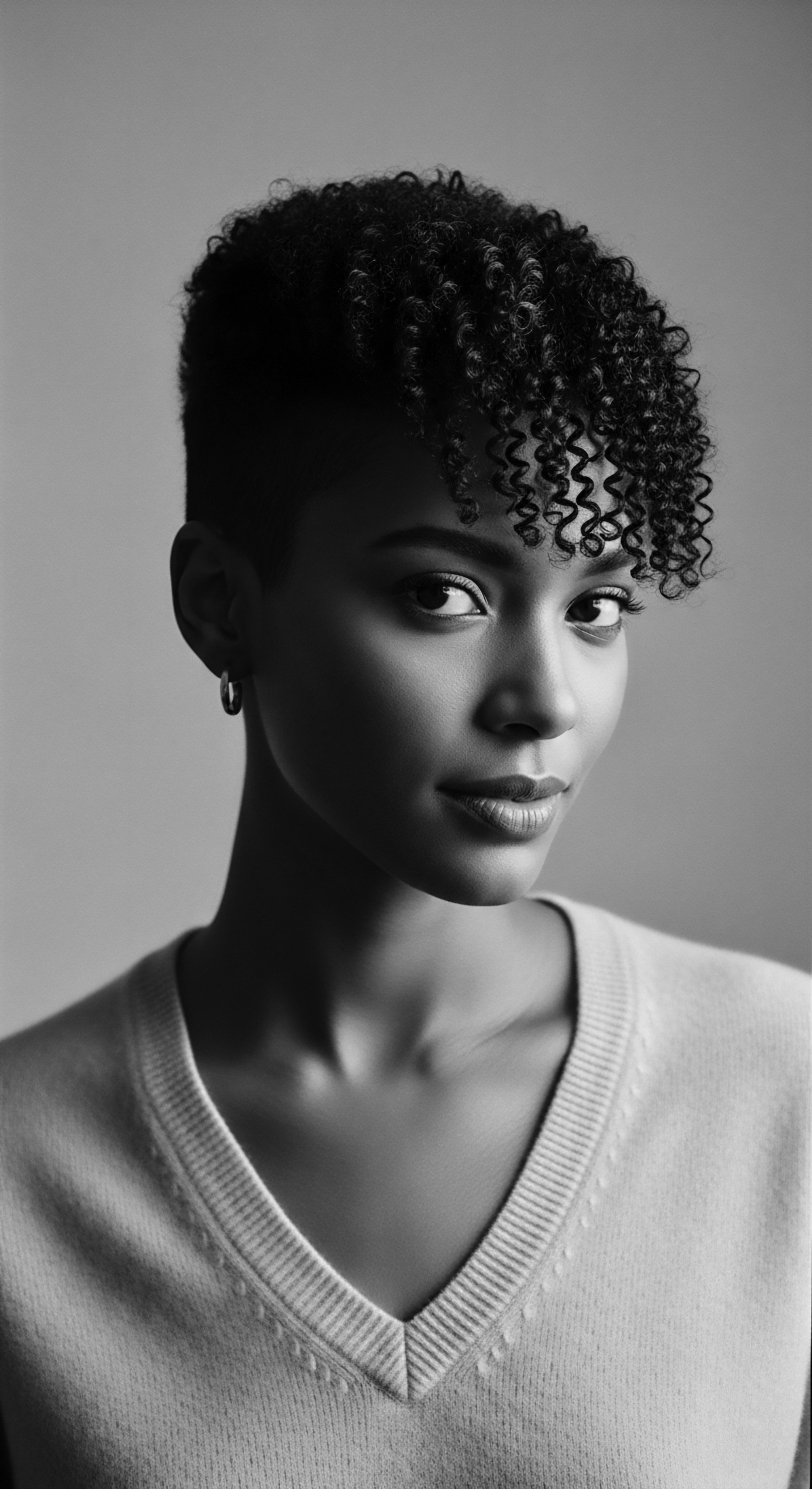
Reflection on the Heritage of Mineral Rich Hair
As we draw our thoughts together, the journey through the delineation of Mineral Rich Hair culminates in a profound reverence for the enduring heritage woven into each coil and strand. It is a concept that truly transcends simple biology, reaching into the ancestral memories embedded within the earth, the botanicals, and the practiced hands of generations past. We perceive that the pursuit of Mineral Rich Hair is, in essence, a continuation of a legacy—a quiet conversation between the inherent wisdom of nature and the discerning care of humanity, particularly within the narrative of textured hair. This understanding invites us to reconsider our relationship with our hair, viewing it not merely as an aesthetic adornment but as a vibrant extension of our history, our resilience, and our connection to the very elemental foundations of life.
The echoes from the source—the earth’s generosity, the plant’s bounty—continue to inform our modern sensibilities regarding hair care. The tender thread of ancestral practices, passed through whispers and demonstrations, reminds us that profound knowledge often exists outside the confines of written texts, residing instead in the lived experiences and communal traditions that define identity. The unbound helix of textured hair, with its unique challenges and unparalleled beauty, stands as a testament to this enduring relationship with minerals, a testament to the fact that strength and vibrancy are not merely given, but cultivated through a deep, abiding respect for what nourishes us from within and without.
To cultivate Mineral Rich Hair today is to honor a timeless lineage, to acknowledge the interconnectedness of our bodies with the planet, and to affirm the sacredness of our hair as a part of our holistic self. It is a celebration of the strength and beauty that have persisted through history, a quiet rebellion against notions that might seek to diminish the inherent magnificence of textured hair. This ongoing legacy, rooted in elemental truth and ancestral wisdom, calls upon us to nurture our strands with the same mindful intention that characterized the care practices of those who came before us, ensuring that the vibrancy of Mineral Rich Hair continues to unfurl its story for generations yet to come.

References
- Anhwange, B. A. et al. (2011). Comparative studies on the mineral composition of some traditional Nigerian soaps and modern conventional soaps. Journal of Applied Sciences and Environmental Management, 15(4), 693-696.
- Piel, V. & Thoden van Velzen, S. (1980). Silicon in Hair Structure. Springer-Verlag.
- Robbins, C. R. (2012). Chemical and Physical Behavior of Human Hair. Springer Science & Business Media.
- Jackson, C. (2001). Hair ❉ A Cultural History. Reaktion Books.
- Bender, A. E. (1992). Vitamins and Minerals in Health and Nutrition. Churchill Livingstone.
- Gale, T. (2005). Encyclopedia of Hair ❉ A Cultural History. Greenwood Press.
- Parrish, B. (2019). The Heritage of Hair ❉ Adornment, Protection, and Identity in African Cultures. Smithsonian Books.
- Sengupta, R. & Chakraborty, B. (2016). Hair Care and Beauty ❉ A Holistic Approach. New Age International.
- Turner, D. (2009). Hair Story ❉ Untangling the Roots of Black Hair in America. St. Martin’s Press.
